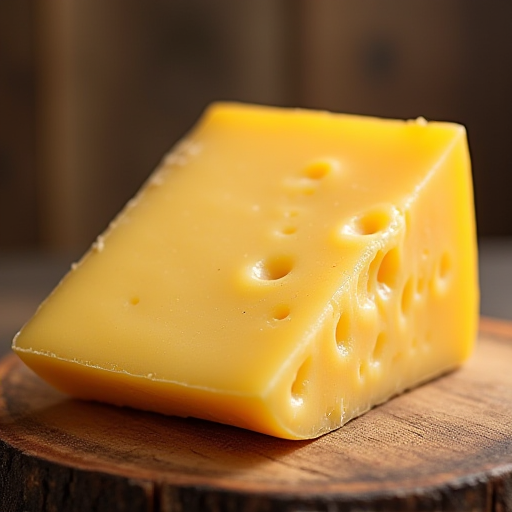
Why Does Aging Intensify Cheese's Yellow Color?
Cheese is a beloved delicacy worldwide, known for its diverse flavors, textures, and colors. Among these characteristics, the vibrant yellow hue of many cheeses often becomes more pronounced with aging. This change in color is not merely cosmetic; it is the result of a fascinating interplay of factors that occur during the cheese aging process. This article will explore the reasons behind the intensified yellow color of aged cheese, delving into the science behind cheese production, the role of milk, and the chemistry of aging.
The Basics of Cheese Color
Milk's Natural Pigments
The primary ingredient in cheese is milk, which naturally contains pigments such as beta-carotene. Beta-carotene is a yellow-orange pigment found in plants and is a precursor to vitamin A. Cows that graze on grass consume a significant amount of beta-carotene, which is then transferred to their milk. This pigment is fat-soluble, meaning it resides within the milk's fat globules, contributing to the milk's creamy hue.
Cheese-Making Process
During the cheese-making process, milk undergoes several transformations. The addition of rennet causes milk to coagulate, separating into curds and whey. The curds, which contain most of the fat and beta-carotene, are further processed and shaped into cheese. The initial color of the cheese depends largely on the beta-carotene content in the milk used.
Factors Contributing to Cheese's Yellow Color Intensification During Aging
Concentration of Pigments
As cheese ages, it loses moisture through evaporation, a process known as dehydration. This loss of water causes the concentration of pigments like beta-carotene to increase within the cheese matrix. The reduced water content makes the remaining pigments more concentrated, enhancing the cheese's yellow color.
Chemical Reactions
Aging involves complex biochemical processes that alter the cheese's texture, flavor, and color. One of the most significant reactions is the Maillard reaction, a form of non-enzymatic browning that occurs between amino acids and reducing sugars. This reaction can contribute to the deepening color of cheese over time, affecting both its surface and interior.
Rind Development
For cheeses that develop a natural rind during aging, the color can be further influenced by microbial activity. The growth of certain molds or bacteria on the cheese surface can interact with the cheese's natural pigments, enhancing or altering its color. The rind can serve as a protective layer that allows specific reactions to occur, contributing to the cheese's overall color profile.
Light Exposure
Cheese exposed to light, particularly during storage, can undergo photodegradation of its components. This process can lead to a change in color, although it is often undesirable as it can affect flavor and nutritional quality. Controlled aging environments manage light exposure to prevent such adverse effects while still allowing desired color changes to occur naturally.
Types of Cheese and Their Aging Effects
Different types of cheese exhibit varying degrees of color change during aging. For example:
- Cheddar: Known for its rich orange-yellow color, cheddar's hue intensifies with age due to the concentration of beta-carotene and potential annatto coloring used during production.
- Gouda: This Dutch cheese develops a deeper yellow to caramel color as it ages, thanks to the Maillard reaction and moisture loss.
- Parmigiano-Reggiano: While not as vividly yellow as cheddar or gouda, this cheese's color becomes more pronounced as it matures, with a more golden hue developing over time.
Conclusion
The intensification of cheese's yellow color with aging is a multifaceted process influenced by the concentration of natural pigments, chemical reactions, rind development, and controlled exposure to environmental factors. Understanding these processes not only enhances our appreciation for the art and science of cheese-making but also enriches our culinary experience. Aging transforms cheese into a more complex and flavorful product, with its deepened color serving as a visual indicator of its maturation and quality.
